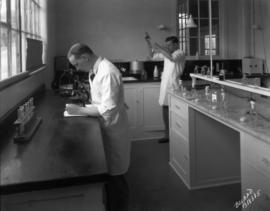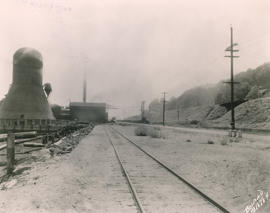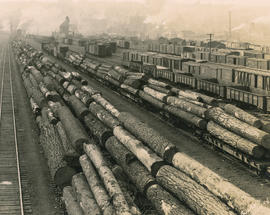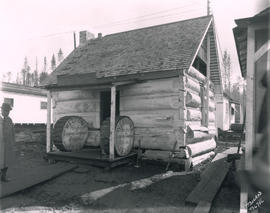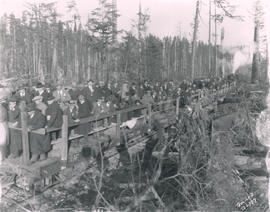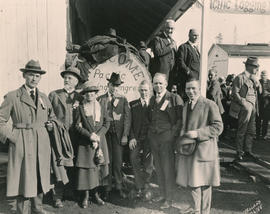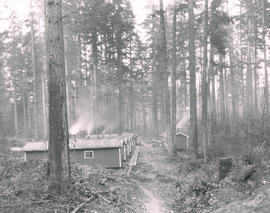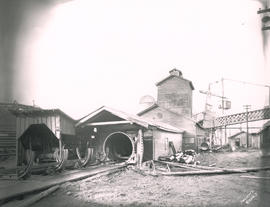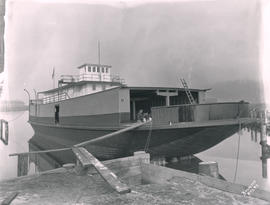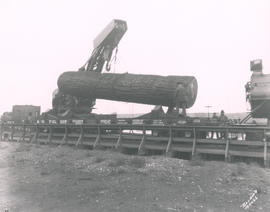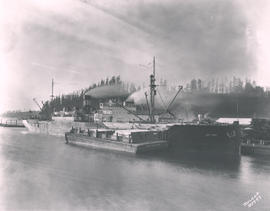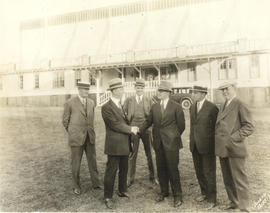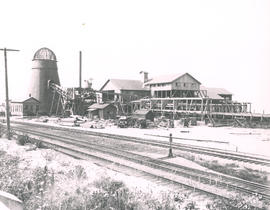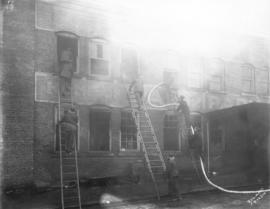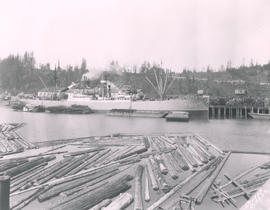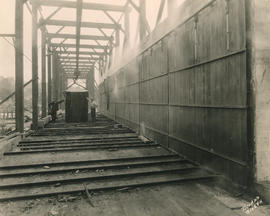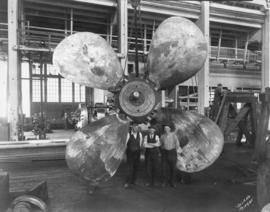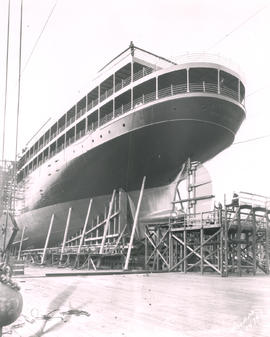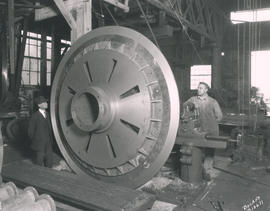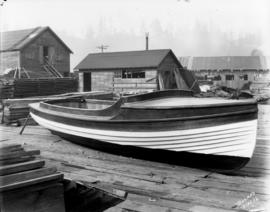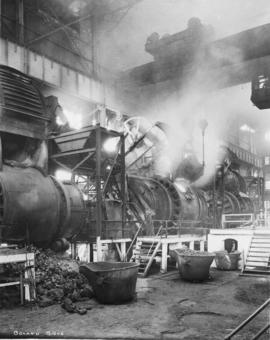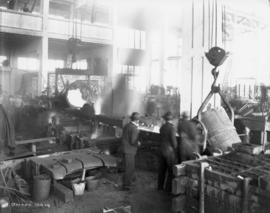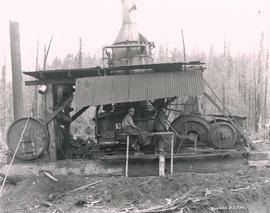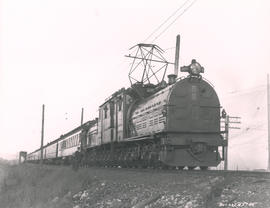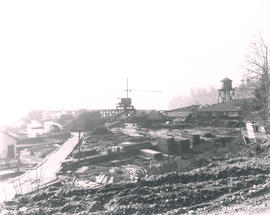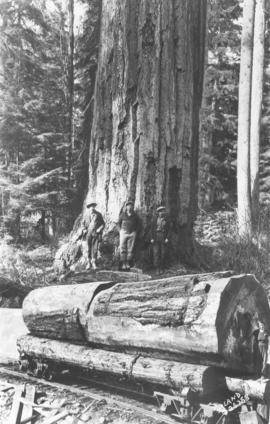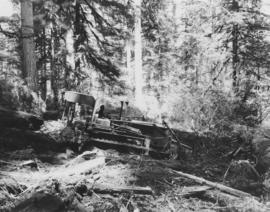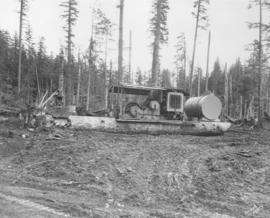- Item
- 1928-04-18
Part of Marvin Boland Photographs
Two employees, believed to be Bert Sweeting and Robert Stone, of the (then) Royal Ice Cream Co. are pictured in the company's laboratory on April 18, 1928. Mr. Sweeting, head bacteriologist, is peering into a microscope while his assistant, Mr. Stone, is examining the contents of a tube. The ice cream company had moved into new quarters at 2413-21 Pacific Avenue just six months before. It had announced plans to merge with the Producers Dairy in March of 1928 and would operate under the new name of Medosweet Dairies, the name chosen in a contest won by 9-year-old Jack Richards. Medosweet had installed this laboratory, the first in Tacoma of its kind, to guarantee the highest quality of its ice cream, milk, cream, buttermilk and cottage cheese. The laboratory would use the most modern equipment to assure purity and meet exacting standards. (TDL 3-22-28, p. 3-ad; TNT 4-15-28, p. 14-ad; TNT 5-1-28, p. 2-article on lab; TNT 6-4-28, p. 5-article) G34.1-144
Royal Ice Cream & Milk Co. (Tacoma); Laboratories--Tacoma--1920-1930; Dairy products industry--Tacoma--1920-1930; Medosweet Dairies, Inc. (Tacoma)--Employees;
